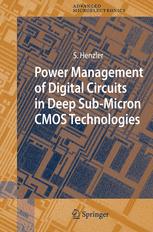

Most ebook files are in PDF format, so you can easily read them using various software such as Foxit Reader or directly on the Google Chrome browser.
Some ebook files are released by publishers in other formats such as .awz, .mobi, .epub, .fb2, etc. You may need to install specific software to read these formats on mobile/PC, such as Calibre.
Please read the tutorial at this link: https://ebookbell.com/faq
We offer FREE conversion to the popular formats you request; however, this may take some time. Therefore, right after payment, please email us, and we will try to provide the service as quickly as possible.
For some exceptional file formats or broken links (if any), please refrain from opening any disputes. Instead, email us first, and we will try to assist within a maximum of 6 hours.
EbookBell Team

4.3
58 reviewsIn the deep sub-micron regime, the power consumption has become one of the most important issues for competitive design of digital circuits. Due to dramatically increasing leakage currents, the power consumption does not take advantage of technology scaling as before. State-of-art power reduction techniques like the use of multiple supply and threshold voltages, transistor stack forcing and power gating are discussed with respect to implementation and power saving capability. Focus is given especially on technology dependencies, process variations and technology scaling. Design and implementation issues are discussed with respect to the trade-off between power reduction, performance degradation, and system level constraints. A complete top-down design flow is demonstrated for power gating techniques introducing new design methodologies for the switch sizing task and circuit blocks for data-retention and block activation. The leakage reduction ratio and the minimum power-down time are introduced as figures of merit to describe the power gating technique on system level and give a relation to physical circuit parameters. Power Management of Digital Circuits in Deep Sub-Micron CMOS Technologies mainly deals with circuit design but also addresses the interface between circuit and system level design on the one side and between circuit and physical design on the other side.